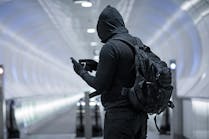EIS disrupting remote guarding with proactive approach
Civil unrest, anti-police sentiment, light criminal sentencing and many other factors are creating a challenge for security firms to protect physical assets and keep up with demand for services.
But Los Angeles-based Elite Interactive Solutions (EIS) believes it has a solution to prevent crime and improve the rate of apprehensions through advanced forensic engineering, proprietary software and trained remote monitoring staff. The company is present in 22 states and several different verticals, with car dealerships and multi-family developments serving as the biggest clients.
In the last three quarters EIS says it has prevented several thousands of crimes and participated with law enforcement in almost 800 detentions and arrests. He believes the results are important at a time when civil unrest, anti-police sentiment and high cost and lack of availability for security guards are challenging security professionals.
EIS CEO and founder Aria Kozak – who is considered the father of remote guarding -- says 9/11 changed his vision about crime prevention. A special forces officer with the Israeli military from 1967-70, Kozak was also the founder and president of Intellisec and Universal Alarm Systems.
Although camera technology is a crucial tool for remote guarding systems to work, Kozak says advanced technology and relationships with law enforcement are also critical to moving the needle on reducing false alarms and preventing incidents, rather than simply reacting to them.
“It’s not about equipment. Equipment never was the solution and it’s never going to be,” Kozak told SecurityInfoWatch in an interview. “We’ve taken off-the-shelf solutions and calibrated them so they work together and we can react to something legitimate. I'm eagerly awaiting the evolution in this industry, and I'm inspired to see the writing on the wall. This is going to be incredible to the security industry in a very, very positive, positive way.”
Reducing the Noise
As the foundation of its security approach, EIS selected what it believes are the best software technologies from various parts of the world and integrated them. The technology contains 16 elements — including video analytics, artificial intelligence and cybersecurity — designed to filter out the “noise” and focus on actual events threatening a client.
Some of the technology partners listed in the company’s literature include the Viakoo Action Platform, Ai-RGUS for camera health, Bomgar Beyond Trust for remote access and support solutions, and SightLogix thermal security cameras.
EIS sites are monitored 24/7 by “a state-of-the-art, fully redundant security command center” which is UL-certified, the company says. The firm has invested in specially trained former law enforcement and ex-military agents who are experts at responding in real-time to incidents and diffusing situations through live voice-down interactions.
EIS also has an in-house Law Enforcement Advisory Board and FBI-LEEDA support — which means operation center calls are given priority response that helps officers be safer and achieve detainments and arrests.
This prevents or stops criminal activity 96% of the time and cuts down on false alarms that clog up workflow for remote guards and build reactive instincts that need to become more proactive, the company says.
“You cannot succeed in crime prevention if you don't solve the false alarm problem, the noise,” Kozak says. “We’re not comparing ourselves to a guard. If you take a part-time guard, even if he or she is the most honest and the best one, there is really no justification for a $15-an-hour individual to secure a multi-billion-dollar business.”
EIS says that since 2019 the company has seen higher event volume, crime preventions, police detainments and arrests, and this year alone the firm is on target for another 10% increase in arrests or detainments compared 2022.
As of Sept. 29, Elite’s Security Operations Command Center (SOCC) had directly prevented more than 53,000 incidents since the beginning of the year and teamed with law enforcement in nearly 1,300 other active situations that resulted in suspects being detained or arrested 61% of the time.
Solving Crime
One recent incident that Kozak highlighted occurred in the Los Angeles area this year at Amcal First Street Apartments, one of EIS’ customers.
Shortly after 2 a.m. on Aug. 13, EIS’ command center received a video alert for an unidentified vehicle with a flat tire parking in the apartments’ tenant entrance. Elite’s agents issued a precautionary “voice-down” and the Santa Ana Police Department was contacted for a response to a wellness check. Two observed individuals were heavily intoxicated, with one of them passing out near his vehicle.
Their descriptions and locations were relayed to police dispatch, EIS says. Prior to the officers’ arrival, the two subjects were robbed and assaulted, which EIS’ operations center communicated to Santa Ana police dispatchers.
Before the officers arrived, one new individual rode his bicycle in and attempted to rob the initial individual. Officers were seen arriving on the property and handcuffing the individual attempting to rob the initial person, who had passed out.
Shortly afterward, paramedics were seen arriving and transporting both robbery victims to the hospital. A follow-up call to the police conveyed that the officers had contacted the victim.
At that point, no further information was provided. But two weeks later, video footage supplied by EIS helped the police department’s subsequent investigation, resulting in the apprehension of two additional perpetrators who fled the crime scene.
Kozak says EIS has recruited customers away from traditional security guard companies who wanted more focus on crime prevention.
“How you measure success is not having claims to the insurance company and really preventing crime,” he says. “What is the value to corporate America of preventing crime to the tune of 96%? Massive.”



